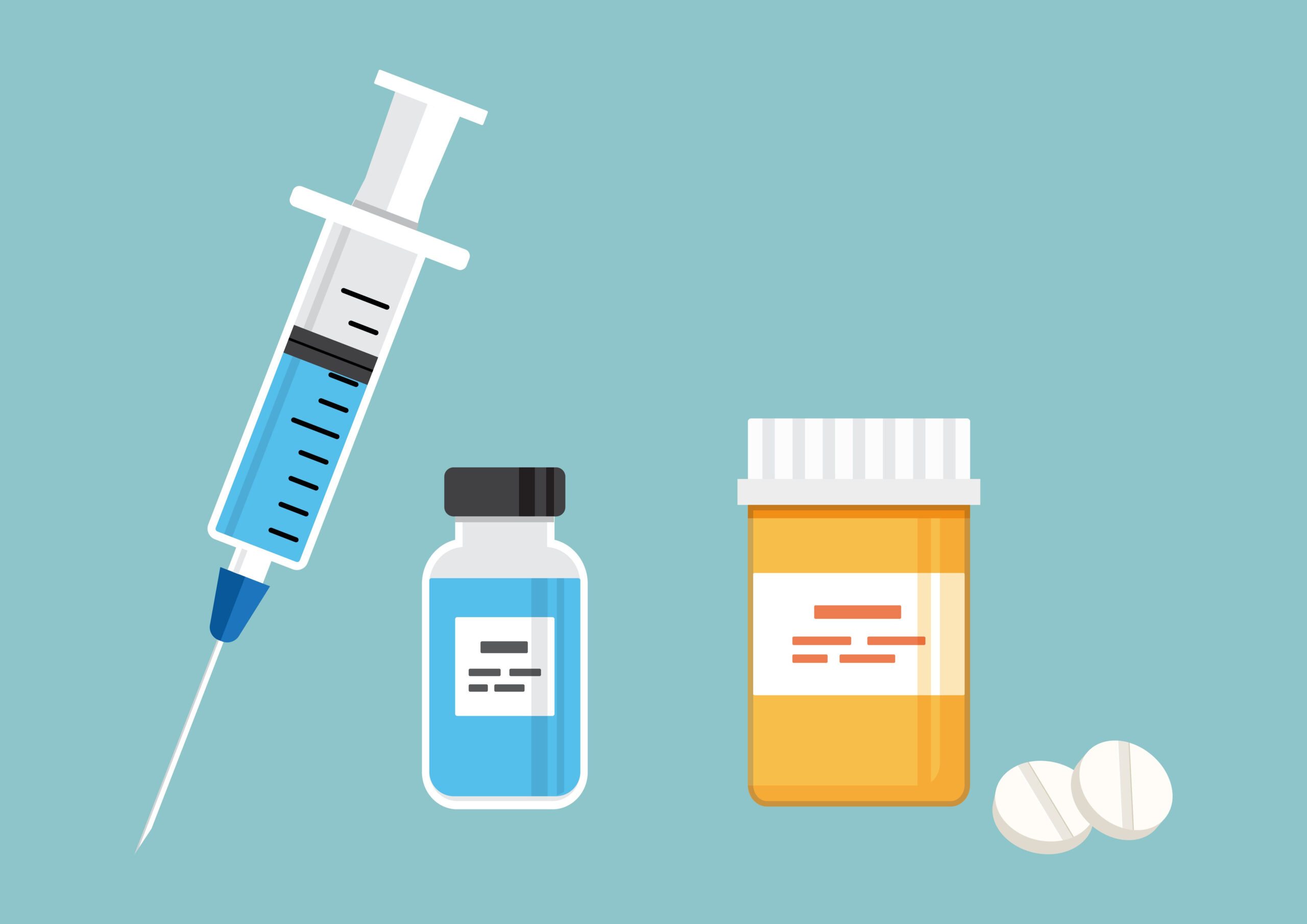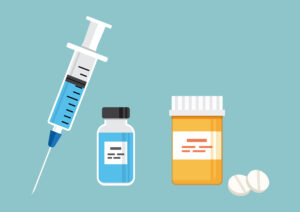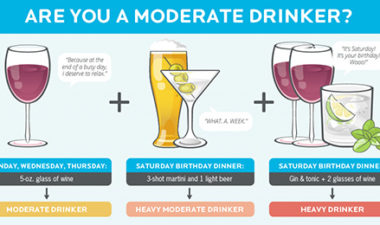“HARM REDUCTION” DRINK LESS WITH MEDICATIONS: MY CLINICAL EXPERIENCE
Paul Kolodzik, MD, FACEP, FASAM
Board Certified Addiction Medicine Specialist in Dayton, OH
The traditional approach to treating alcohol use disorder (AUD) has centered around abstinence, with inpatient and residential rehabilitation programs built upon this model. However, recognizing the limitations of this approach, there’s a growing advocacy for harm reduction strategies, focusing on reducing alcohol consumption rather than complete abstinence. Driven by a more advanced medical model, Dr. Paul, a Board-Certified Addictionologist emphasizes the use of medications alongside standard techniques to reduce alcohol intake. While existing FDA-approved medications like naltrexone have shown promise, emerging evidence suggests the potential of semaglutide, primarily used for diabetes and weight loss, in reducing alcohol cravings. Despite not yet being FDA-approved for AUD, semaglutide’s efficacy in curbing alcohol use is supported by clinical experience and animal studies. Although prescribing semaglutide for AUD is currently limited to patients meeting diabetic or BMI criteria due to insurance coverage and cost considerations, its combination with medications like Naltrexone presents a promising approach in treating AUD, offering significant reductions in alcohol consumption. As research progresses and peer-reviewed studies confirm its effectiveness, broader adoption of semaglutide for AUD treatment is anticipated, potentially revolutionizing approaches to alcohol addiction management.
To learn more about the use of medications for problematic alcohol use, to schedule a new patient evaluation with Dr. Paul, please complete the questionnaire here:

For nearly 100 years the primary treatment offered to patients seeking help for excessive drinking, sometimes the only treatment offered, has been abstinence. The whole industry of inpatient and residential alcohol rehabilitation is built on this model. Though a minority of patients seek and achieve abstinence for life, a majority of patients seeking abstinence experience multiple periods of abstinence followed by multiple relapses. Sometimes the periods of relapse and associated abuse last for years. I believe it is time to look at a more advanced medical model for the treatment of alcohol use disorder (formerly called alcoholism). We do not treat cancer or heart disease the same way as we did in the 1920s. Why should we treat substance use disorders like we did 100 years ago?
HARM REDUCTION
The concept of “harm reduction” is the approach of seeking a reduction in alcohol use, and not necessarily complete abstinence. As a Board-Certified Addictionologist I have treated hundreds of patients successfully with this approach. Some of these patients, after they have reduced their alcohol use, go on to abstinence. Most continue limited alcohol use with volume intakes greatly reduced and well within established guidelines.
MEDICATIONS TO REDUCE ALCOHOL USE
In the majority of my patients, I treat I utilize a medication, or multiple medications, to help reduce their alcohol use. I also employ many of the other standard techniques to assist with reducing the amount of alcohol consumed. These include daily and weekly drinking limit goals, journalizing of drink volumes (drink logs), managing “persons, places, and things” variables, stress reduction, and even, at times, Alcoholics Anonymous or Smart Recovery. practices if applicable, etc.
There are three medications approved by the FDA for the treatment of alcohol use disorder. I believe a fourth will approved in coming years which is already being used by some clinicians because of early evidence of its effectiveness. These medications include:
- Disulfiram (Antabuse): This medication is taken daily, and then if alcohol is consumed a physiological reaction occurs causes illness – mostly nausea and vomiting. Some serious reactions have occurred with this “punitive” negative reinforcement technique. I do not use Disulfiram.
- Acamprosate (Campral): Improves prolonged abstinence in only one out of eight patients. It is dosed as two pills three times a day, so conforming to this regimen is difficult. Because of the limited efficacy and difficulty in getting patients to be compliant with this medication, I do not use it routinely.
- Naltrexone: This medicine is a “brain pleasure receptor blocker” (Reduces the “pleasurable effects” of intrinsic or endogenous opiates (endorphins and enkephalilins, dopamine and serotonin.) The result is a reduction of the pleasurable “warm and fuzzy” feeling associated with alcohol use. I have prescribed this medication for years and it can help greatly in reducing alcohol volume intake (see more below). It can be prescribed daily by pill, monthly by injection, or intermittently only on days that alcohol is ingested. The last approach is called the “Sinclair Method” and I have used it successfully in my addiction medicine practice for the last 10 years.
- and now we’re learning about another: glucogon-like peptide 1, or GLP-1 for short. Today, it’s better known as the diabetes management and weight loss medication semaglutide (Wegovy, Ozempic).
SEMAGLUTIDE
Semaglutide is not yet approved for reducing alcohol use. However, with the increased use of these medications for diabetes and weight loss it is becoming evident that this medication reduces alcohol cravings in addition to food cravings. Rather than me enumerate the information out there on this subject, just Google ‘semaglutide and alcohol”. You will find dozens of articles supporting the use of semaglutide to reduce alcohol use. Though no “double blinded peer review studies” (the gold standard in medical research) have been published on this subject, several are in process. There are many case studies series, anecdotal results of a small number of patients, affirming significant alcohol use reduction. Numerous animal studies (mostly with rats) also confirm the mediations likely efficacy. As an aside, my comments about semaglutide also generally apply to other “GLP-1” medications used to treat obesity such as Tirzepatide (Manjouro, Zepbound), liraglutide (Saxenda) and others.
And then I have my personal clinical experience. I have treated hundreds of patients with semaglutide for the indications of diabetes and/or obesity, and the result related to alcohol use reduction is clear to me. Nearly universally, alcohol use is significantly reduced in those who previously reported they were drinking “too much”. And it is also reduced even in those who did not have any issues with alcohol. Patients, along with their reduced hunger on these meds, indicate little or no desire for alcohol. I have had patents drinking too much (for example 30 drinks or more a week) who routinely cut their drinking in more than half, or even stopped drinking. And I have had many patients who were drinking in the acceptable range (15 drinks a week for men and 7 drinks a week for women) who all but eliminated or did eliminate their alcohol use altogether.
BUT IF NOT YET FDA APPROVED FOR ALCOHOL USE DISORDER, CAN SEMAGLUTIDE BE PRESCRIBED FOR ITS TREATMENT?
The answer is “yes and no”. If a person uses too much alcohol, but also meets the diabetic or Body Mass Index (BMI) obesity/ overweight criteria for semaglutide use per the FDA criteria, they may be prescribed the medication. It is being prescribed for the FDA-approved indication, with the knowledge of both the physician and the patient that it will also result in lower alcohol intake. Though “off label” use is common (prescribing a medication for a use that is not FDA approved for), I do not know any medical providers who are prescribing this medication for patients not meeting diabetic or Body Mass Index criteria. However, I think this will become common in the future, once some peer review studies proving the effectiveness of this therapeutic modality for alcohol use disorder have been published. I currently am only prescribing semaglutide to help patents reduce alcohol use . . . so long as they meet one of the other FDA criteria.
INSURANCE AND COST ROADBLOCKS
Medications are often not covered by insurance when the indication they are being prescribed for is “off label”, or not FDA-approved. Furthermore, semaglutide has very limited insurance coverage for the treatment of overweight/obesity, meaning most people do not have this medication on their health care coverage pharmacy formulary. (The exception is that Ozempic is often covered, but only for patients with a true diagnosis of diabetes.) If not covered, patients must pay the full “out of pocket” cost for the brand name medication (in this case Wegovy). Out of pocket costs for these medications are commonly more than $1,000 per month. Fortunately, generic “compounded” medications are availble at about a third the cost for patients who do not have insurance coverage for the brand name medications. Semaglutide is usually compounded with vitamin B12. Compounded medications are also usually not covered by insurance, nor are they FDA approved. They are manufactured in the US by state licensed pharmacies.
MULTIPLE MEDICATION THERAPY: “KILLER COMBINATION” FOR ALCOHOL USE DISORDER
I have treated a number of patients to help them reduce alcohol use with medications over the last decade. For much of this time I have utilized primarily The Sinclair Method using naltrexone, and have had very good results. Recently, since semaglutide has become available, I have treated a number of patients with the combination of semaglutide and The Sinclair Method. In combination with standard behavioral techniques (drink log, etc. discussed above) I have found this combination to be more effective than any other approach to reducing or eliminating alcohol use. It is rare for a patient to not significantly reduce alcohol use with this approach. As stated above, at this time I only add semaglutide to this regimen if the patient is diabetic or meets BMI criteria. If you are interested in learning more about the use of medications to reduce alcohol use, please contact the North Dayton Addiction and Recovery office.

Dr. Paul Kolodzik, MD, FACEP, FASAM is a triple board physician in emergency medicine, preventive medicine and addiction medicine. To learn more about the alternative approaches to alcohol use disorder, disease prevention and improved metabolic function programs which Dr. Paul offers in his private outpatient addiction medicine practice, please contact us below by submitting an Online Inquiry here:
Disclaimer: The content provided in this blog is for informational purposes only and should not be considered medical advice. It’s essential to consult with a qualified healthcare professional or your personal physician regarding any medical concerns or questions you may have. Each individual’s health circumstances are unique, and only a licensed medical practitioner can provide personalized advice tailored to your specific needs. If you have any medical concerns or questions, please seek guidance from a healthcare professional or contact your doctor for assistance.




